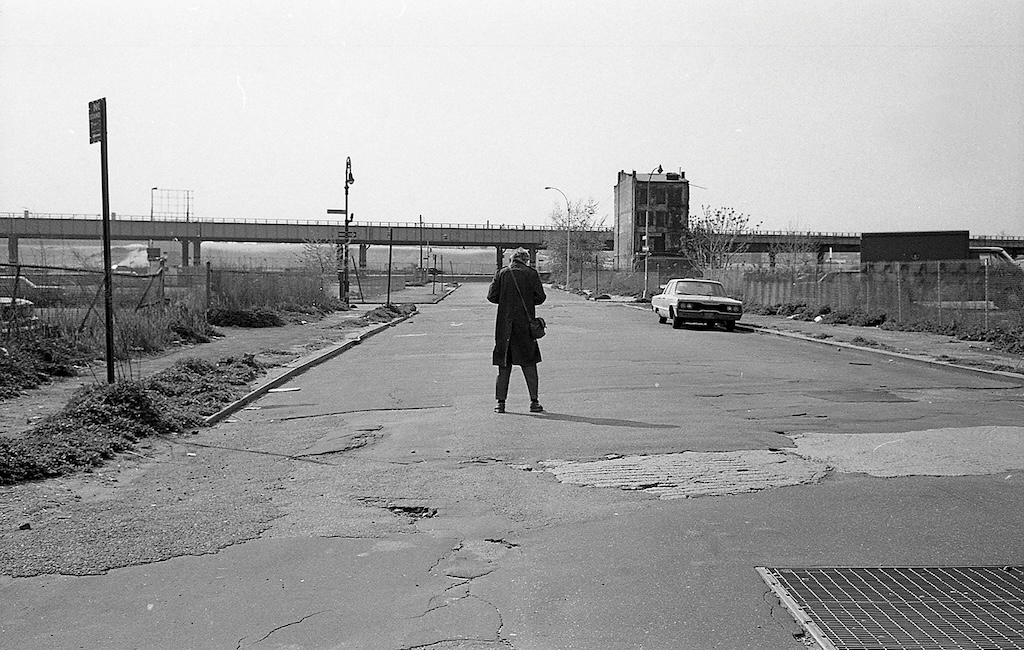New Photo Book Explores Tribeca’s Four-Decade Transformation

Tribeca, Lower Manhattan’s neighbor to the north, is a thriving area home to trendy restaurants, hip boutiques, high-end real estate and famous residents like Taylor Swift and Beyoncé. But Tribeca wasn’t always such a hotspot (or even called “Tribeca,” which stands for “Triangle Below Canal Street”). For decades, the area was largely industrial, its 20th century transformation spurred by an influx of artist residents in the 1970s. Photojournalist Carl Glassman, the editor and co-founder of the Tribeca Trib, moved to the neighborhood in 1979 and has spent years capturing its metamorphosis on camera. You can experience it for yourself via his new book, “Tribeca: Four Decades in Pictures,” which features images spanning from 1980 to 2024.
Glassman and his wife, Tribeca Trib co-founder April Koral, moved into a $350/month apartment in a Mitchell-Lama development in Tribeca more than 40 years ago, when the neighborhood was a very different place. “It was largely artists who were living here,” he told the Downtown Alliance. “There were not many other people. There was no place to shop. We had to go up to the Village to do our grocery shopping.”

He started snapping photos of the area as part of his natural curiosity as a street photographer. Over the years, though, he ended up chronicling an essential period of urban renewal, The first image in “Tribeca: Four Decades in Pictures,” taken in 1980, features a photographer standing alone on an empty street, the West Side Elevated Highway visible in the distance and wide open expanses on either side. (“It looks like country,” Glassman said.) Today, that very same site houses multiple luxury apartment developments, a Whole Foods and a public school; just beyond the now-gone elevated highway, you’ll find Battery Park City, which was built on landfill from the construction of the original World Trade Center.

Flipping through the book, you can see the neighborhood’s landscape change, thanks in part to 1990s rezoning changes that brought more retail and residential buildings to the area, as well as the construction of new landmarks like the Tribeca Bridge and Pier 26. Glassman also captured a more subtle change: the new influx of families to the neighborhood, with more recent photographs highlighting playgrounds, strollers and young children frolicking in the streets.
“We had our first kid in 1986,” Glassman said. “Before that, it was unusual to see families in the neighborhood. There was one small school, and you didn’t see stroller after stroller on the sidewalk.”

The book also includes images of news events Glassman photographed for the Tribeca Trib, including the death of Tribeca resident John F. Kennedy, Jr., flooding during Hurricane Sandy, the Covid-19 pandemic and, of course, the attacks on the World Trade Center on September 11, 2001. Together, all 80-plus pages of “Tribeca: Four Decades in Pictures” showcase a neighborhood that has played host to, and become a part of, New York City history, freezing erstwhile landscapes and fleeting moments in ink.
“That’s the wonderful thing about photography and what I’ve always loved about it,” Glassman said. “It allows you to preserve something forever that is going to change, whether it’s a human moment, or a place that will eventually change.”

He added, “To be able to look back at that always is a wonderful thing to me.”
You can purchase “Tribeca: Four Decades in Pictures” here, and be sure to follow the Tribeca Trib for more updates on the neighborhood.
main image: Left, book cover. Right, photo by Carl Glassman.
Tags: feature, Tribeca

